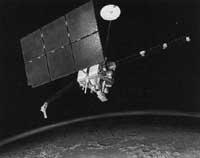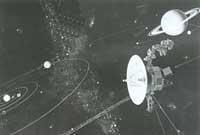No space for Nasa
1994/05/01 Wade, Nicholas Iturria: Elhuyar aldizkaria
Mars Observer Martitz was designed to map our neighbor. NASA spent a billion dollars on its development, but has failed to do so without errors. In August of last year, as he approached his goal, communication was interrupted and Martitz's endless postal chain had no beginning either.
This and other errors could not come in worse time for the exploration of space and its protectors. It is no longer necessary to win the USSR on the Moon or on Mars. NASA cannot say that it provides the industry with the most cutting-edge technology, as it has long overtaken it in materials and computers.
Given the performance of recent years, wouldn't NASA have to remove its $15 billion budget and allocate that amount to other tasks?
Imagine for a moment that there is no NASA, that in the clumsy man-driven ships no investment has been made. Would we need a space scan? What arguments can be used to launch a new civil space agency?
One is that out there is much to discover. The Solar System is full of wonders that we have just discovered, from the blue bubble of Neptune floating in the limits of Sunlight, in the chiaroscuro, to the eleven satellites of Saturn's rings.
In addition to the discoveries, another reason is the security opportunity. Are not two planets better than one? Perhaps Martitz is the most accessible place in the Solar System.
On the other hand, there is no doubt that humanity will exceed the limits of the Earth. Why not start as soon as possible?
However, deepening scientific knowledge can be the strongest reason for exploring space. It is socially accepted that research that has no practical consequences is among the obligations of governments, because sometimes it has unforeseen benefits.
The exploration of planets is not cheap, but if the eradication of crime and poverty were a precondition for doing something less priority, the government would not help opera, environmental protection or quark hunting. The project Apollo de Ilarginación Humana had a great success, with a cost of almost 25 billion dollars. If that amount had been used in social programs (where money is often minimal), its impact would have disappeared long ago.
The problem is another. Instead of using $15 billion a year, with only $5 billion, a first-rate space program can be organized. To do this, people must be left on Earth and ships guided by computer to space. Ensuring human security eats part of the lion in the NASA budget. Although human beings will ever live off Earth, there is no logical program to say that it must be done so quickly.
In Los Alamos and Livermo, two of the world's best teams of physicists and engineers are currently looking for an intellectual challenge because the design of nuclear weapons has reached its peak. Let these two laboratories compete to build spaces in the same passion as the first nuclear heads. Their scientists would challenge the challenge and their ability would create high-level machines to explore the mysteries on the other side of Earth. Waste management Translated and adapted by Inaki Irazabalbeitia from the New York Times Magazine.

Gai honi buruzko eduki gehiago
Elhuyarrek garatutako teknologia





